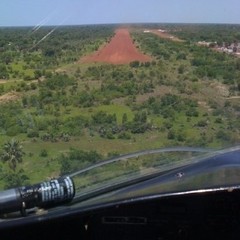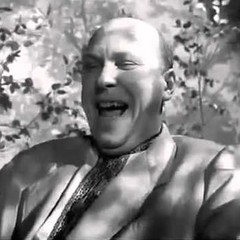

Lex Talionis
Members-
Posts
283 -
Joined
-
Last visited
About Lex Talionis
- Birthday 09/01/1980
Recent Profile Visitors
The recent visitors block is disabled and is not being shown to other users.
-
8kidd8tv started following Lex Talionis
-
Geoman started following Lex Talionis
-
Devastator started following Lex Talionis
-
Maddog-1969 started following Lex Talionis
-
cochise started following Lex Talionis
-
MustangSally started following Lex Talionis
-
Fuelburner started following Lex Talionis
-

What does this "W" symbol in the HUD exactly do?
Lex Talionis replied to majapahit's topic in DCS: F/A-18C
Washout... -

What does this "W" symbol in the HUD exactly do?
Lex Talionis replied to majapahit's topic in DCS: F/A-18C
The "W"hat-a-burger -
yogibaboo started following Lex Talionis
-
Demiurgo started following Lex Talionis
-
Vettefan started following Lex Talionis
-

reported earlier Hornet still ballooning after bolter.
Lex Talionis replied to nicka117's topic in Bugs and Problems
-
Bingo.
-
FBW or not, all aircraft (from f18s to C152s) seek the AOA/AS it is trimmed for. It is a fundamental aerodynamic reality of longitudinal stability. The skill set talked about works for the 45 (and should for all aircraft where the pilot is responsible for trimming the aircraft) with the understanding that, each aircraft will have some nuance regarding the aplitude and duration of the oscillations undergone as the airframe seeks equilibrium. I would highly recommend watching the vid posted earlier, all of this will be explained with exercises to practice the skill set. (Had no idea people still used it) You can see the position of each control surface on the fcs page. But if you know how to trim properly (pilot sh!z 101) it isn't really needed. There is lots to be talked about on the subject. It can be quit counterintuitive when trying to wrap your head around it on your own. Your not the first and will certainly not be the last wrestling with this. Good luck, hope it helps.
-
Instead of trying to assume what the FCS is doing, think of it like this ... Configured (when you as the pilot have controll of the trim) the aircraft will always pitch to seek the AOA/airspeed you have trimed it for, regardless what the FCS is doing, regardless if you just did a touch and go, regardless of power, it is transparent to you as the pilot. Dont worry about what the FCS is doing, it was designed to be an extension of the pilot, not a system to be managed. With all other things equal, longitudinal stability will play out in the hornet as you the pilot would expect it to play out in any other fixed wing aircraft, with or without an FCS, cesna 150 to bell X-15, t45 to f18. To answer the question directly, if you let go of the stick, the plane will seak what it is trimmed for, regardless, ceteris paribus. On a cat shot, the trim is such that the aircraft will pitch nose up if left to its own demise (i.e let go of the stick). Understand, if the throttle is left untouched, the aircraft is accelerating during the entire take off, not only will the aircraft trade kenetic energy for potential to keep what it is trimmed for, the nose will rise exponentially to further trade energy states as the aircrafts kenetic energy state tires to increase. Hope that helps (there is so much context to this conversation it is hard to keep it "simple". If i am restating things others already know, my apologies, im not trying to insult anyone's inteligence)
-
I apologize for the aerodynamics diatribe. For those that don't care disregard. The general premis that the trim button resets the aircraft to some neutral/all applicable setting is simply incorrect. There is a difrence between an aircraft being trimmed for its current airspeed/AOA, and setting "take off trim". The intent behind the trim button (any take off trim setting for any aircraft) is to set the jet up for predictable behavior for the aerodynamic transition from zero airspeed to rotation on take off. A regime of no aerodynamic control authority to increasing levels of control authority up to full control authority, proper laminar flow over the wings and rotation. You dont want the stick/yoke trimmed such that just as you gain elevator authority on TO roll, the aircraft prematurely pitches nose up, rotation happens at to slow an airspeed and you stall. You dont know the forces from the trim untill you gain authority, and on a TO that is typically to late to figure out you have not done your TO checks to include setting TO trim. Given the context above: Depending on the energy state and the various aerodynamic nuances between aircraft (engine spool up times, p factor/ left turning tendencies, landing gear configuration effecting run way ground track ability, if the engine creates a positive/negative pitching moment, etc etc etc etc etc) ...... during a touch-and-go, some aircraft revert back deeper into that take-off transition than others. Lesser performance aircraft tend to take longer to go from an "approach" energy state, back to a safe "rotation" proper aerodynamic control authority energy state. So, for some aircraft a "touch and go" is more like an "approach to land- roll a little bit- then a take off again". These aircraft tend to require the re setting of TO trim. I know there is an actual "roll and go" in aviation vernacular, and i know it may seem as if that is what i am conflating above as a "touch and go". However (pause for effect) given the execution of such is all relative from aircraft performance to aircraft performance, i will define a "touch and go" for this conversation as "retaining the energy to be able to immediately rotate upon landing gear touchdown ". With that definition i also understand some aircraft simply do not have the performance to do a "touch and go" as i defined even though some pilots of those aircraft may call them as such. For this conversation it only proves my point as it is the very example i first provided of a perceived "touch and go" realy being an "approach to land-roll a little bit- take off again" The hornet can do a "touch and go" as i have defined with kinetic energy to spare (depending on weight) with minimal "roll" proceding rotation. Whats more, you know exactly where the trim is (or should know) as you have been flying "on speed" for the entire approach. The trim button should not be used as you are not "taking off". You more than have the power to legitimately "touch and go" easly retaining your airspeed/ control authority/etc for the entire evolution. (The main reason the nose climbs so fast after a T&G in the hornet is becase it simply has the performance to do so while retaining the AOA it is trimmed for. *dont conflate "AOA" with "attitude"* The jet is retaining its control authority at the hi attitude, this is a good thing not a bad as so many percieve it to be. Wield the power correctly. This is also where the conversation segways into the proper use of trim, "don't *fly* with the trim" but thats another conversation) To add (not to create an exception) every touch down at the boat is treated as a missed wire for the very reason of retaining all that energy to make the transition from a descending VSI to an ascending VSI with minimal control authority loss. In short, generally, keep the trim you have (given you are in fact trimmed for the correct airspeed/AOA) in a relitively hi (enough) performance aircraft that can more easily retain its energy during a T&G. Hope that helps.
-
The natops certainly is not an easy read. It refers to case 1 "as in case1" as an example but does not say it necessarily reverts to case 1 procedures. If it does revert to case 1, the boat is now VMC and procedures for the other cases are no longer used(i.e. "bolter pattern " no longer used). The premis of that paragraph is that the ship is not VFR, there is no VFR pattern, for which you would not go into the VFR pattern after a bolter but instead be vectored back arround (given their phraseology "be vectored into ... "). The "bolter pattern " is like "missed approach instructions" after an IFR approach, but not necessarily a means to enter the VFR landing pattern. My apologies, my asumption was that we were talking about case 1/VFR landing pattern given we were talking about "breaking" etc. I should clarify, there is no such thing as a "VFR bolter pattern". And there certainly is no expectation to go into a "bolter pattern" if the VFR traffic pattern is in use (i.e case1) Case 2 is basically an IFR let down to a VFR pattern. The context your paragraph is written in is important. I probably missed the context that we were talking about IMC/IFR/ Case3 (if we were). Apologies for the confusion.
-
To help clarify a few things .... The VFR "pattern" is what it is. Regardless if you enter it from a bolter/hook skip, after the break, or from the catapult, the pattern is 600 agl and it is flowen the same. (There is no such thing as a "bolter" pattern or "wave off" pattern ..etc) The nuance being talked about is how to manage your interval for which, you simply do not launch, break, etc if the timing with your interval is not correct. Wait untill you have proper interval, then break/launch. I.e. you won't be launched if an aircraft had boltered and would creat an interval conflict. Suspended the launch untill the boltered aircraft is at proper interval, then launch. Don't break if doing so will put you on top of an aircraft alread in the pattern. Delay your break untill doing so will put you properly behind your interval. If you run out of distance from the bow of the ship, spin it and return for another break. Don't change the pattern to accommodate a messed up interval. Dont push the trim button in flight, if you need to trim, use the trim hat. Don't reconfigure the aircraft If you intend to stay in the pattern. If the plane pitches excessive nose up, do some of that pilot sh!z and fly to mitigate. You just went from an approach energy state, to a full throttle, full flaps, "bounced off the deck" energy state, the nose is going to pitch up. (More/less pich than IRL is a bit irrelevant at this point, it is within the aircraft performance to control) Hope that helps.
-

How the hell do you guys land this thing?
Lex Talionis replied to HoneyViper's topic in DCS: F/A-18C
If you value your sanity, trim the aircraft . (This thread is becoming painful) -
Other than grey out and tunnel vision preceding G loc, only thing i would suggest would be the fact that, you practically can't move your head at 7.5 Gs +. (I know this reality will chap the ass of many gamers as it wont allow you to pull unlimited Gs while throwing your head around no problem) The technique most commonly used when pulling hi Gs is, to "anchor" your head somewhere on the head box where you believe will give you the best field of view *prior* to G onset. Then pull hoping you didn't misjudge such that you have to unload and reposition your head to regain sight. As far as game implementation, simply reduce field of view panning speed as G increases. Say, reduced movement starting at 6.0 untill frozen at 8+. Remember, average humans head is aprox 10 lbs, then add at least 5 lbs in gear, 15 lbs at 7.5+Gs = 112.5 lbs being held up by your neck. Thats two 45lbs gym barbell plates strapped to your head. Think about it. I have two herneated disks in my neck with nerve damage from exactly this, the joys of pulling Gs in reality.
-
Well, they did silly things like, trade out the trim button for a bleed air knob... !? I mean, ask yourself as a gamer, how often have you needed the bleed air over the trim button ? Make no mistake, it is the throttle i use and i like it very much, and i by no means want to take my job home in the form of creating a sim pit in my living room. It's just a bit silly what switches they chose to keep and which to get rid of. Wish there was an option to get just the throttle levers and not the bastardized switch panel, just my opinion. And thank you for your patience in listening to my silly rants. Hope it helps someone somewhere.
-
Ya, there is a blurb in the NATOPS more recent interm changes that says something like, with the seat adjusted full up, and the stick full aft, the grip may catch the ring .... I have two AB detents, 3d printed and aluminum. The profile makes the TM "feel" correct and looks very similar to the part listed by BuzzU. Its an easy fix.
-
For me it is 1-5 interm change 3. It does in fact say that, winner for the abstract hornet NATOPS knowledge... .... but the finger lifts for AB is literally never used in practical application. And as noted by others, it is more a function of the "32 lbs of force" wich is ultimately transparent to the pilot as you simply push harder for the same result. Pulling the finger lifts in flight was a relatively scary notion given it meant the engine could be inadvertantly shut down. In short, you would certainly never do this during flight, or with the intention to fly, unless an emergency procedure guided otherwise. There are incidents where flight suit wrist cuffs have caught and raisd finger lifts leading to inadvertent shutdowns in flight. Along with inadvertent ejections from the stick catching the ejection loop in the full aft position. There is always nuance between what is written and how it is implemented. EDIT: my natops is from the late 90s, wonder if there is an update that changes the wording given that entire paragraph is an amendment in and of its self. Hope this puts the controversy to bed.









